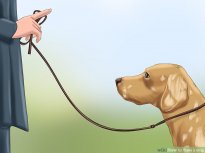How to train pet dogs?

“He’d be perfect as a therapy dog — perfect. You just have to help me stop him from biting so much.”
I wish I could say I’m making this up, but yes, I did have a client who said that, and yes, he truly thought his dog could be a great therapy dog. My client had the best of intentions, but it took a while to convince him that his pathologically shy and potentially dangerous dog was no better suited to therapy work than I am to being a ballerina.
However, a multitude of dogs are just what the doctor ordered, and it makes my heart all warm and gooey to think of the great work they do. Currently, an estimated 30, 000 teams of what are called therapy dogs and handlers are certified through Delta Pet Partners and Therapy Dogs International, and there is little doubt that they are enriching the lives of thousands of people across the country.
A good dog-and-handler team does a lot more than just make people feel fleetingly happy. True therapy dogs — dogs who participate in structured programs designed by health care professionals (Animal Assisted Therapy, or AAT) — can decrease pain, improve mobility, speed up post-surgery healing and even calm autistic children as well as increasing their social interactions. That’s a pretty impressive body of work, and it is just the short list. A larger number of dogs and handlers participate in what are called Animal Assisted Activities (AAA), in which teams visit hospitalized children and senior-center residents. The petting, tricks and furry companionship can stimulate the release of massive quantities of the world’s greatest drug, the neurohormone oxytocin.
Another benefit: AAT and AAA can be as good for the providers as the recipients. Take it from me — watching a senior citizen glow while petting your dog and talking about the special pup she owned 70 years ago is guaranteed to put you in a good mood that lasts for hours.
However, you need to leave your rose-colored glasses at home if you and your dog are involved in AAT or AAA (I’m just going to call it “therapy” from now on, as long as we all understand that I’m using the term loosely). Just because you love your dog doesn’t mean everyone in a nursing home will want to meet her. Plus, your dog may actually hate the work, even though it wraps you in your own haze of oxytocin. In addition, your beloved dog may come home with an antibiotic-resistant bacteria like MRSA, which is commonly found in health-care facilities.
In other words, there’s a lot to learn about doing this work in a way that is truly helpful to others, safe for everyone involved and, as importantly, enjoyable for your dog. In this article, I’ll be focusing on the dogs, because, well, they pretty much drive the system.
Job Qualifications
Let’s start, then, with a question: Which dogs are appropriate for AAT and AAA? Answer: Not many. Ouch. Sorry, but the fact is that therapy work can be tiring and stressful for many dogs, and some dogs have personalities that take them out of the running even though they would love to be on the team. My Border Collie, Willie, might be a good therapy dog when he’s 10 or so, but right now, he’s simply too much dog to visit vulnerable populations. I describe his greeting behavior as that of an adolescent Golden Retriever in a tuxedo (my apologies to Goldens, but I suspect you all now know exactly how he behaves, right?). Oh, he keeps all four feet on the ground, but in his enthusiasm to meet new people, he still quivers and licks and thrashes his tail around like some crazed dishrag on drugs. He’s a good reminder that no matter how much you love your dog, he or she may not be a candidate for therapy work, at least not now.
Related posts:

 Training your dog to do advanced tricks like finding something or bringing their food bowl can be done with just 10 minutes a day and some clicker training. It’s…
Training your dog to do advanced tricks like finding something or bringing their food bowl can be done with just 10 minutes a day and some clicker training. It’s… MARY ISENHOUR-LONG Owner - Trainer Photo by Stewart Event Images About The Trainer The phrase, “gone to the dogs”, is certainly an appropriate one to describe my…
MARY ISENHOUR-LONG Owner - Trainer Photo by Stewart Event Images About The Trainer The phrase, “gone to the dogs”, is certainly an appropriate one to describe my… 6 Principles of Successful Training 1. Be Consistent: Apply the same rules and the same words all the time. 2. Be Concise: Give your command just once. Repetition…
6 Principles of Successful Training 1. Be Consistent: Apply the same rules and the same words all the time. 2. Be Concise: Give your command just once. Repetition… Cesar Millan Cesar is a best-selling author, public speaker, and internationally acclaimed star of the TV shows “Dog Whisperer with Cesar Millan, ” “Leader of the…
Cesar Millan Cesar is a best-selling author, public speaker, and internationally acclaimed star of the TV shows “Dog Whisperer with Cesar Millan, ” “Leader of the… At Monument Dog Training, we believe that change is always possible . We regularly resolve aggressive behavioral issues, even with dogs who have been written off…
At Monument Dog Training, we believe that change is always possible . We regularly resolve aggressive behavioral issues, even with dogs who have been written off…